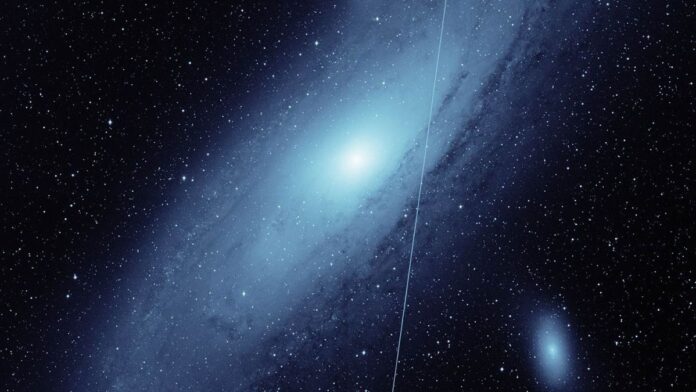With the launch of the James Webb Space Telescope, as with the Hubble Space Telescope before it, space-based astronomy gets a lot of attention, but ground-based observatories are the real workhorses of space science, and they have a really big problem: satellites.
Specifically, the problem is the various ways satellites can interfere with an observation, whether it be radio, optical, or infrared. To help mitigate these issues, the National Science Foundation (NSF) and SpaceX, operators of the fast-growing Starlink internet satellite network, have come to an agreement that they hope will reduce interference with astronomers in an increasingly crowded night sky, according to an NSF statement.
Ground-based observations of near-Earth objects, distant stars, nebulas and galaxies require remote locations with unpolluted night time skies, but they also require long exposure times, with optical lenses collecting light over several seconds or even minutes to accumulate enough distant light to produce an image.
Related: 10 weird things about SpaceX’s Starlink internet satellites
When a passing satellite crosses this field of observation, what looks to a human observer like a single point of moving light becomes a streak across the sky to a telescope, ruining the image astronomers were trying to capture. A 2022 study in The Astronomical Journal Letters found that 5,301 satellite streaks showed up in archival observations captured at the Zwicky Transient Facility in California between November 2019 and September 2021.
“In 2019, 0.5% of twilight images were affected, and now almost 20% are affected,” Przemek Mróz, a former Caltech postdoctoral scholar and the study’s lead author, said in a Caltech statement published in January 2022.
To mitigate this, SpaceX has already begun working on redesigns for its second-generation Starlink satellites, including solar array mitigation, dielectric mirror film and a new kind of black paint for its satellites that it hopes will reduce brightness.
SpaceX also agreed to look at just how much of an effect, if any, the lasers that NSF facility use to sharpen their instruments’ vision actually affect the operation of a satellite. Observatories had been turning off their lasers whenever a Starlink satellite was nearby, but that won’t be necessary any longer, according to the statement.
SpaceX is addressing the concerns of radio astronomers as well as optical. The company has agreed to a number of coordination efforts since Starlink satellites use a radio band very close to that used for radio astronomy. In addition, the company has agreed to study the impact of Starlink terminals located near the Very Large Array in New Mexico and the Green Bank Observatory in West Virginia.
(Given the remote nature of radio facilities, the surrounding communities have been historically underserved when it comes to high-speed internet access, a problem that Starlink has specifically cited as a reason for its satellite network in the first place.)
SpaceX and the NSF also agreed to work together more closely going forward to address the concerns of the astronomical community as new issues arise as Starlink’s satellite constellation grows even larger.
“We are setting the stage for a successful partnership between commercial and public endeavors that allows important science research to flourish alongside satellite communication,” NSF Director Sethuraman Panchanathan said in the statement.
Follow us on Twitter @Spacedotcom and on Facebook.

